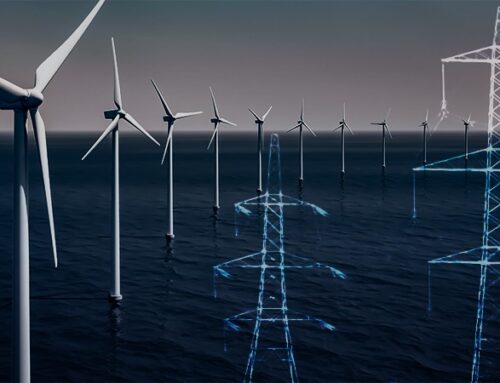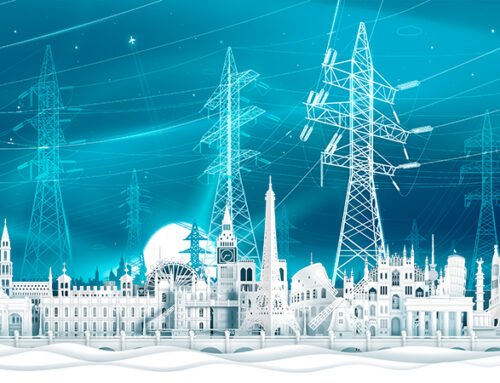The words “Australia” and “energy crisis” are increasingly being used together, so it is interesting to consider how an energy rich country has found itself on the brink of energy chaos, with blackouts and brownouts occurring over the past year and a half. Australia’s National Electricity Market (NEM) is under severe pressure due to a poorly managed transition to renewable generation, closure of coal plants, and a growing dependence on gas at a time of rising gas prices.
Traditionally, most electricity generation in Australia came from coal, gas and hydro, but now wind and solar account for 7% of all generation and in South Australia, wind alone accounts for almost 50% of all electricity consumed. About 15% of Australian households have rooftop solar, up from under 1% in 2007.

According to a recent report from the Grattan Institute, the past 18 months have seen new vulnerabilities in the Australian electricity market emerge. September 2016 saw a state-wide blackout in South Australia, the first state-wide blackout since the formation of the NEM in 1998, and smaller blackouts/instances of load shedding have been seen in Victoria, Western Australia and New South Wales since late 2015.
The failure of Tasmania’s electricity interconnector to Victoria in December 2015, left the state unable to import or export electricity for six months. As this coincided with a drought that reduced hydro output, the state was forced to import diesel generators in order to maintain supply, and even then some businesses were required to make significant demand reductions.
The September 2016 blackout caused significant economic damage (with some estimates as high as US$280 million). But even when the grid is functional, South Australia has the highest energy prices in the country and the average household pays over US$1,500 a year for power.

Capacity closures driving high prices and system instability
As increasing renewable generation pushed down wholesale prices, coal stations began to close, with 3.6 GW capacity closing between 2010 and 2016, and the 1,600 MW Hazelwood power plant which was capable of providing one quarter of Victoria’s electricity needs shutting in April 2017. Even with prices now rising rapidly, further closures are scheduled.
This is triggering an unprecedented use of gas-fired generation, driving higher electricity prices on the back of high gas prices – despite being a significant gas producer, the majority of production is committed under long-term export contracts. The Australian Energy Market Operator (AEMO) has warned of possible gas shortages as early as the summer of 2018-19 if action is not taken by the market or by government.
During the summer of 2016-17, prices in all NEM states (except Tasmania) were twice those in the previous summer.
There are now concerns that there may be insufficient generation to meet peak demand in South Australia and Victoria next summer, meaning they will need to import power from other regions of the NEM if wind and solar are unavailable during peak times. However, despite plant closures and rising prices, the Grattan report describes the market as “un-investable” – investment in new generation, including in renewables, is stalling as the market waits for clear signals from government.
It’s not just new capacity that is needed. With the closure of large units of synchronous generation, the stability of the power system is being undermined. Other technologies such as synchronous condensers, synthetic inertia controllers and large-scale battery storage could provide grid-stabilisation services, but these have not yet been adopted in Australia. (Although Elon Musk recently promised to fix South Australia’s energy crisis in just 100 days by installing large battery farms.)
Indeed, the inertia provided by traditional generators has not historically been not recognised by the market, and ancillary services products are for longer response times of 5 minutes, 1 minute and 6 seconds – by comparison, National Grid in the UK has already created a market for frequency response services with sub 1-second response times to counter the impact of higher penetration of intermittent generation.
According to Grattan, South Australia has one of the highest levels of intermittent, non-synchronous electricity generation in the world, driven by the federal Renewable Energy Target (RET), and is particularly vulnerable if the interconnector with Victoria fails and South Australia is cut-off from the NEM. AEMO estimates that almost a quarter of the time South Australia would be unable to cope if unexpectedly cut-off, and for most of the rest of the time its ability to cope would be “uncertain”. Clearly, more thought needs to be given to how the intermittency of renewable generation can be accommodated within the electricity system.
Confused policy initiatives risk exacerbating the situation
NEM wholesale prices have never provided full investment signals as hedging and ancillary services markets provide alternative revenue streams for generators, much as in the UK. Also in line with markets elsewhere, government subsidies have supported renewables projects and network investments are made outside the wholesale market but can have major consequences for potential new generation schemes.
Uncertainty over the future direction of government policy further complicates matters in a number of respects:
- Federal climate change policies are not currently sufficient to ensure Australia can meet 2030 emissions reduction targets;
- Different states have adopted different targets over different timeframes;
- The government has announced investments in new generation, with the potential for further investments in the future; and
- The South Australian Government has threatened direct intervention in the activities of the market operator.

In response to potential capacity shortages, both the Federal and South Australian Governments have announced new direct investment in electricity generation – a development which risks destroying any ability the market had left to provide appropriate signals for decisions on investing in new capacity and closure of old capacity. The Federal Government has announced feasibility studies for two pumped hydro projects, with up to 4,500 MW of capacity and the South Australian Government has announced funding for a new gas facility and one or more large-scale battery storage facilities as part of an emergency energy package.
The South Australian Government justified its decision to invest in a new gas facility saying:
“The private sector is not building new generation. That is why government is stepping up and taking control of our energy future by investing in new generation.”
The Government has sought to reassure the market that the new government-owned generation would only be used only for emergencies, but market participants are unconvinced: AGL Energy has labelled this “wishful thinking” and has abandoned its own plans to build a new gas-fired power station. New state-owned generation is likely to deter private investors meaning that even more taxpayer funded projects will be needed to support security of supply.
De-carbonisation must be properly managed to avoid serious threats to electricity systems
The Australian example is a further illustration of the dangers in pursuing uncoordinated de-carbonisation policies. Replacing large amounts of conventional generation with renewable energy without paying due attention to security of supply and grid stability presents risks that are more immediate and potentially more damaging than the emissions they seek to mitigate – the South Australia blackout did not only cause significant financial losses, it also put lives at risk when the back-up generators at a major Adelaide hospital failed, and embryos at a local fertility clinic were lost.
In the meantime, South Australians are paying extremely high prices for their electricity while facing the risks of further blackouts, and indeed job losses, as lack of confidence in reliable baseload supply is causing heavy industry to consider re-locating outside the country.







Kathryn: Your first graph makes no sense at all. I cannot believe that electricity demand and production in Australia soared from 15TWh to over 30TWh in the space of a few years.
Are you sure you are not confusing nameplate capacity with actual electricity consumption?
Hi Leo,
I had my heading the wrong way round, which I’ve corrected, but the charts are from the 2016 Australian Energy Update – pg 20 for the renewables chart. (https://industry.gov.au/Office-of-the-Chief-Economist/Publications/Documents/aes/2016-australian-energy-statistics.pdf). I have also checked the underlying data table and the data is consistent with the chart so there isn’t a graphing error.
Elsewhere in the report is a chart (fig 3.3) which shows how electricity generation has increased over the period. The underlying data tables can be found here: https://industry.gov.au/Office-of-the-Chief-Economist/Publications/Pages/Australian-energy-statistics.aspx and show that electricity generation has increased by a factor of 1.6x between 1989/90 and 2014/15. My first chart shows only renewables which have doubled driven by wind going from zero at the start of the period to over 11 TWh at the end.
The date range is 25 years.
Kathryn